Learn how to make pine tea using fresh pine needles. Pine tea is a wonderful natural remedy for respiratory ailments and especially useful to keep you healthy during cold, virus and flu season.
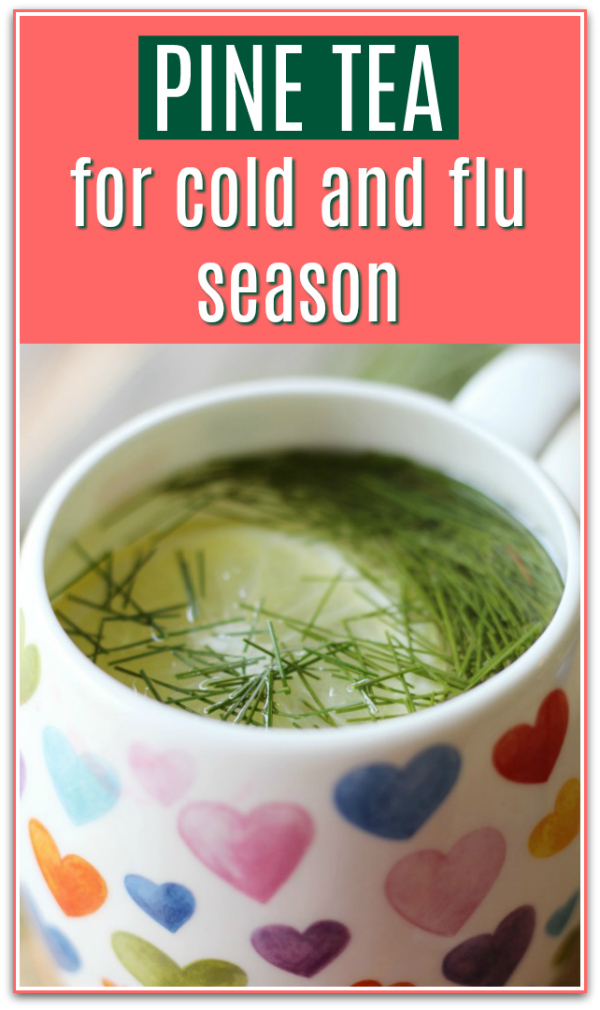
How to Make Pine Tea for Cold & Flu Season
During the cold winter evenings, you can often find my family drinking a warm mug of fresh pine tea. It nourishes and strengthens both our body and soul.
We’ve found pine tea to be a wonderful and very effective wellness support.
My little boy is almost 3. So naturally, we’ve been exposed to some respiratory ailments from his friends. But we’ve all stayed healthy and unscathed, including my son, who I’ve watched be directly exposed! I believe our pine tea has played a big support in keeping us healthy and strong all throughout the cold and flu seasons.
Not only is pine a fabulous wellness support, but if a respiratory ailment or the flu would take hold, pine tea is a natural remedy that can be used to help kick it quickly.
And one of the coolest parts? We have multiple pine trees right in our backyard, which means that this wonderful medicinal beverage is provided to us for free!
Pine trees are found abundantly throughout North America. You may even have one in your backyard….if you do, lucky you! If not, there’s a good chance that you know someone who does.
Health Benefits of Pine Needles
Pine needles are most well known for the respiratory support they provide so well. They can help both in the prevention and the treatment of respiratory ailments. Pine needles are an expectorant, which means they works to draw phlegm and mucus up and out of the lungs. They’ve also been used successfully to draw out toxins or objects embedded in the skin.
When taken internally, pine soothes inflammation and relieves coughs. Pine is also a potent natural antiseptic, antibacterial, antiviral, antimicrobial and extremely high in antioxidants, including Vitamin C. In fact, there’s about 5 times more Vitamin C in pine needles than in oranges and lemons!
That means it’s the perfect natural remedy to keep colds, viruses and the flu at bay AND to provide support for a quick recovery if a respiratory ailment, virus or the flu takes hold.
In fact, pine needles have something called shikimic acid, which is the
main crude ingredient in Tamiflu! (
source, source)
Pine needles also contain high levels of vitamin A, which make them good for eyesight, hair and skin regeneration and red blood cell production.
Pine also increases the body’s circulation which helps oxygen reach all of your body parts and internal systems.
Even though pine is most well known, researched and used for cold and flu prevention and treatment, there are many more studied benefits of pine, including:
- Boosts energy and fights fatigue
- Supports immune system
- Relieves chest congestion and coughs
- Relieves a sore throat
- Increases mental clarity and cognitive performance
- Fights illness and infections
- Slows down the aging process
- Helps allergies
- Supports digestion
- Improves vision
- Strengthens heart health
- Speeds healing
- Prevents degenerative and chronic diseases
- Activates collagen production
How to Make Pine Tea
One of the best ways to harness the benefits of pine is to drink pine tea. It’s a simple beverage made with pine needles and hot water. You can add lemon slices and a bit of honey if you wish, but I’ve found that it needs nothing at all.
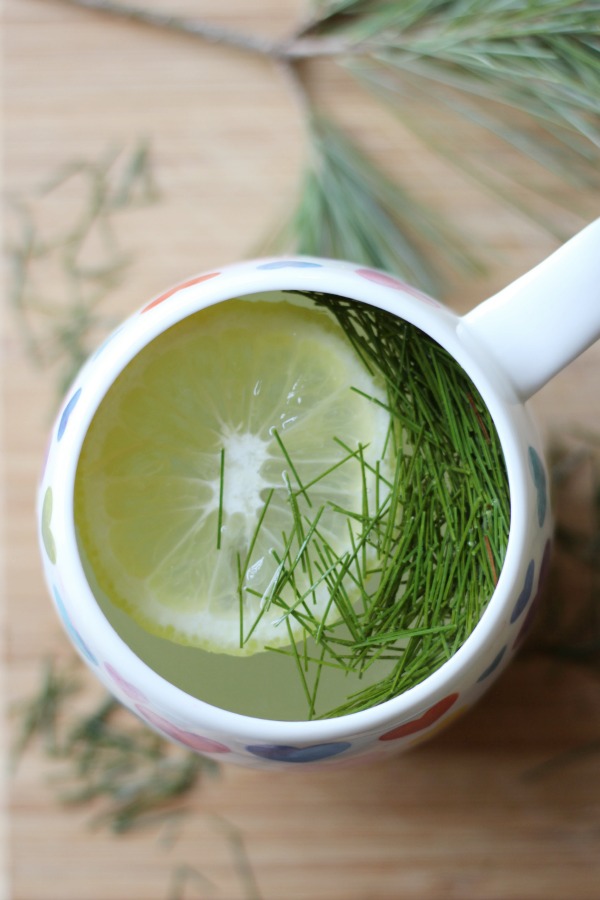
Directions for pine tea:
- Collect a handful of pine needles or snip off a small branch from a true pine tree (see pine tree identification below).
- Cut the needles into 1 inch pieces. I like using small pieces of twigs/branches, too – it adds even more of that lovely pine & woodsy flavor and aroma.
- Add 1 tablespoon fresh needles/twigs to one mug of hot water. Cover and let steep for 10-15 minutes.
- Strain and serve warm. You may add a bit of honey and/or lemon slices, if desired.
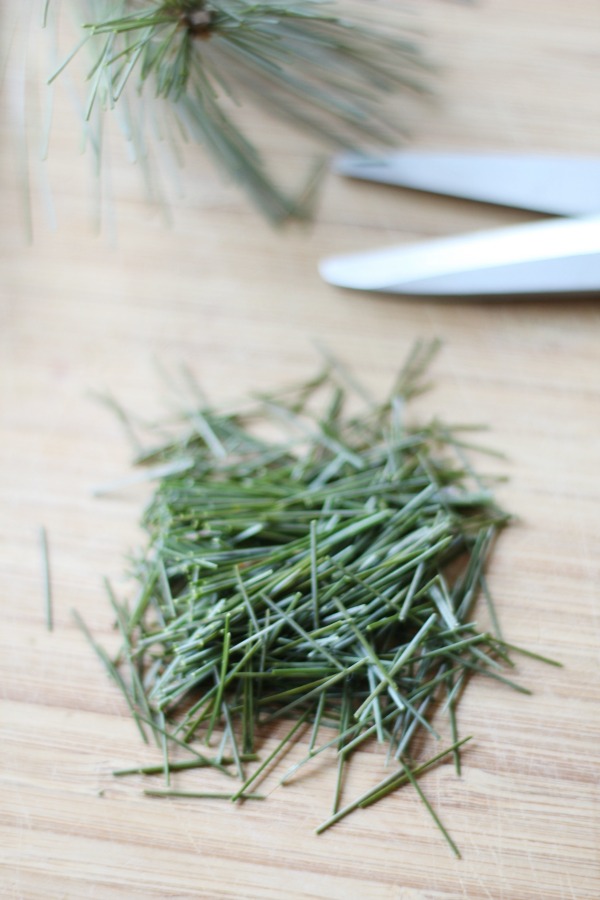
How Often to Drink Pine Tea:
As always, it’s best to listen to your body. This is how my family drinks pine tea:
If we’ve been exposed to a cold, the flu or other respiratory ailments or we’ve been in crowded places like an airplane, we’ll fill up a large thermos and sip on pine tea as soon as possible after the exposure. We’ll repeat the day after an exposure. The pine tea helps keep our body healthy and strong so ailments won’t take hold in our body.
Any other time in the cooler months, we simply drink 1 mug a few evenings a week or whenever I feel the desire to make it. We generally don’t drink pine tea in the hotter months because pine tea is considered a warming food.
When we drink our pine tea, I offer my child 1/4 cup of pine tea and if he wants to drink it, he does. If not, no big deal. We’ve always practiced baby led weaning and we don’t control what he eats or doesn’t eat – it’s his choice. Although, most times he chooses to drink it with us and says “mmmm, pine tea is delicious!” 🙂
If a respiratory ailment, cold, virus or flu would take hold, I’d fill up a thermos of pine tea and sip on it all day and evening until symptoms subside.
*I am not a doctor and this is not medical advice and should not take the place of proper medical advice.*
How to Identify a Pine Tree:
Pine trees are evergreen trees, which means they stay green all year long. Many people mistake all evergreen trees that have needles and pine cones as pine trees. But not all of these needle and cone bearing conifer trees are true pine trees. It’s important to make sure that you have a true pine tree.
But do not fear! It’s very easy to tell the difference between a real pine tree and another conifer species if you just take a look at the needles.
True pine trees will have needles grown in clusters, called fascicles, that generally range from 2-5 needles per cluster.
Here’s an example in the picture below. Notice how this pine tree has needles growing in clusters of 5.
If your needle and cone bearing tree has needles grown in clusters, you’ve got yourself a true pine tree. Any true pine tree can be used to make pine tea. All true pine trees are edible.
(There is a suggestion floating around to not consume pine tea if you are pregnant or planning to become pregnant based on one report of cows consuming extremely large quantities of Ponderosa pine. The idea is that it may have possibly been a cause of a very small percentage of them to miscarry. But we’re not cows and we’re not eating pounds and pounds of it. As with everything, it’s the dose that makes things harmful. In the case of pine tea, we’re drinking very small doses in water extraction. I personally consumed pine tea while pregnant, but use at your own discretion if you are pregnant.)
I hope you’ve found my experience with pine tea helpful and I invite you to try this wonderful natural remedy during the cold, virus and flu season! I’d love to hear your thoughts if you try it 🙂

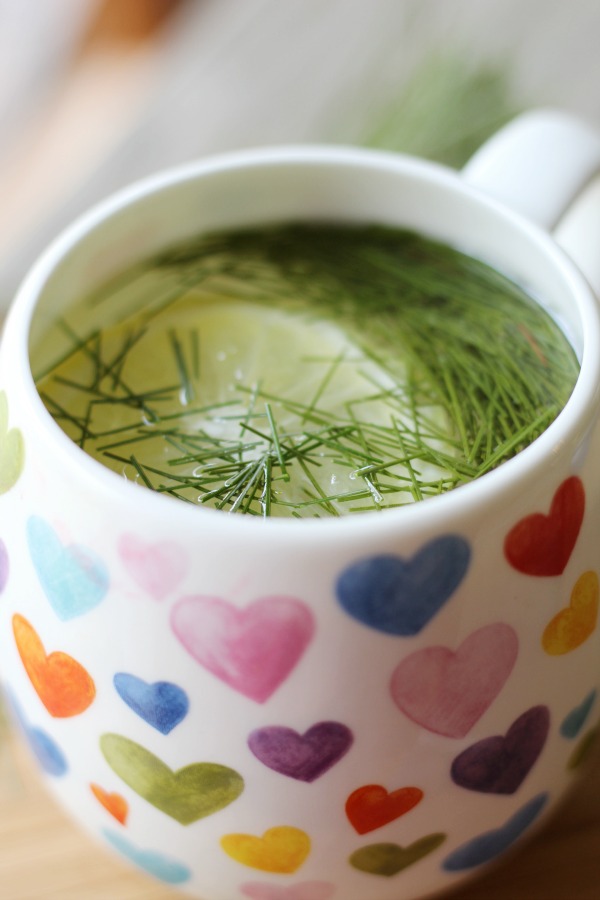
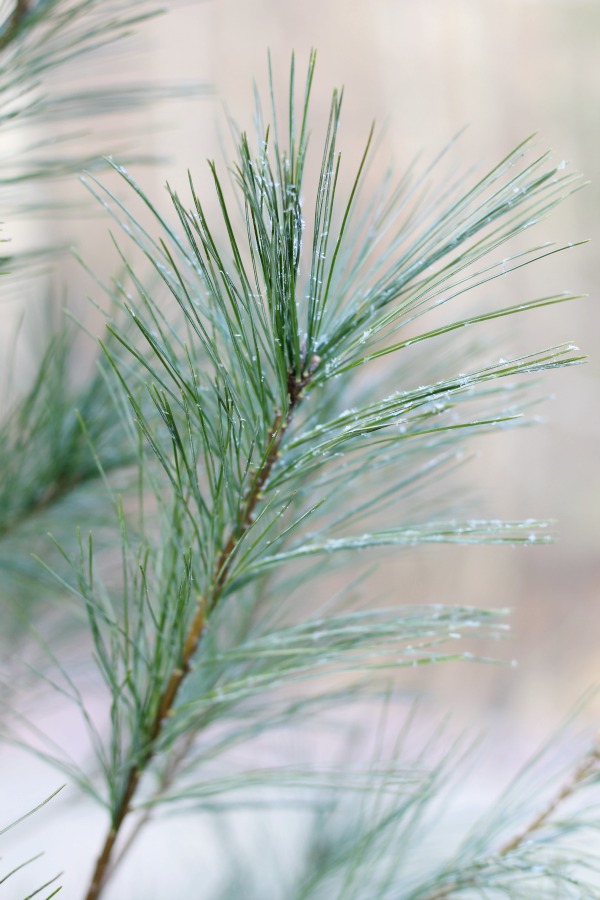


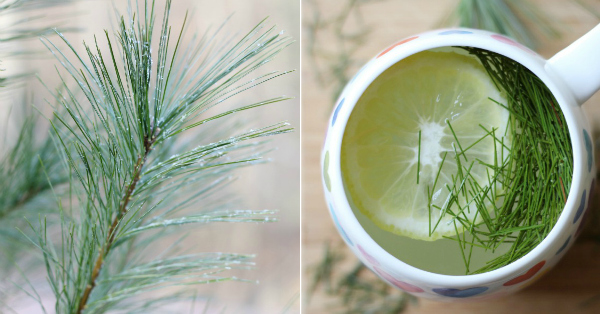

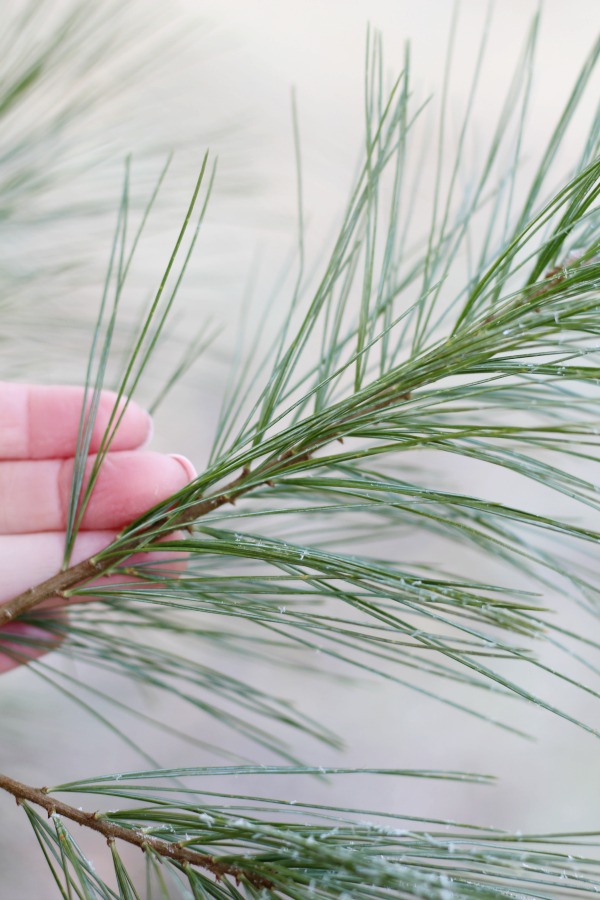



 Primally Inspired Real food, Natural Remedies, Holistic Living
Primally Inspired Real food, Natural Remedies, Holistic Living






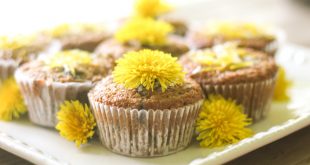
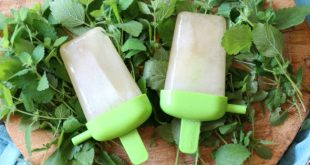
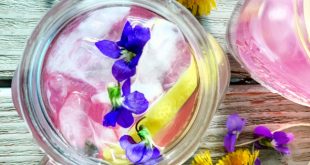
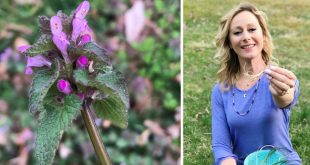
I ??????❤ that mug! I have a pine tree on the corner of my street, I am curious to try this tea. Thank you for this information, who knew??
Hi Tricia! I got it for Christmas and it was my favorite present!!! It just makes me so happy in the morning 🙂
Do they have pine tea in the health stores
I’m not sure, Katherine. I’ll look the next time I go. I do know that some Korean markets often carry it and you can also order many pine products (pollen, bark, needles) at herbal shops and online health and herbal stores. Here’s a pine needle powder I found —> https://amzn.to/2tKbCjo
We live in the great Northwest. We have lots of pins trees on our property. This is such a great idea. I enjoy your post so much and look forward to new ones. Keep up the good work. I bet it is hard, sometimes, having a little one around. But you have the most important job in the world; raising that little one with God’s help! God bless you richly!
Thank you, Barbara Ann! So nice to hear from you and your thoughtful, encouraging words!!
I’m really enjoying these toddler years! And yes, you are absolutely right – it’s been quite a challenge to figure out how to get things done with a little one around. A lot of things got put on the back burner and my priority list definitely shifted, which is ok with me (although, it did take some time to get to the point where I could say I was truly ok with that). This season in life goes quickly, I’m told 🙂
Thanks again for such a supportive comment….it warmed my heart! Many blessings to you!
We have pine trees in a nearby park. Do the needles need to be cleansed in any way before using? I ADORE pine! Thank you so much for this recipe/knowledge.
Hi Shelley,
I generally don’t clean mine – if any beneficial bacteria survives the hot water, I welcome it!
But it won’t hurt anything to rinse the needles gently in cool water if you wish, too. Enjoy!
Any particular species recommended Kelly? We have a Cypress and another kind I can’t ID but will try to find out.
Hi Michele, your Cypress one isn’t a true pine, which can be so confusing because it’s even called a Cypress Pine! But it’s in the Cypress family (Cupressaaceae), not Pine (Pinus) family. Some Cypresses you don’t want to eat (but some you can!) so just be sure to research it before you try 🙂
I love the mild, light taste of the White Pines – that’s my personal favorite! But all true pines are edible.
Thanks for this information. I am going into the woods to harvest the Pineneedles because I don’t have any at my house. Will they be as effective still if they are not freshly picked? How should I store them? I was thinking they needed to be in the freezer maybe?
Hi Stephanie,
Fresh is best, but dried pine needles/twigs are still very effective and are a great way to make tea. You can freeze them or dry them. Dried, they will last about a month in a paper bag. Hope that helps! Take care!